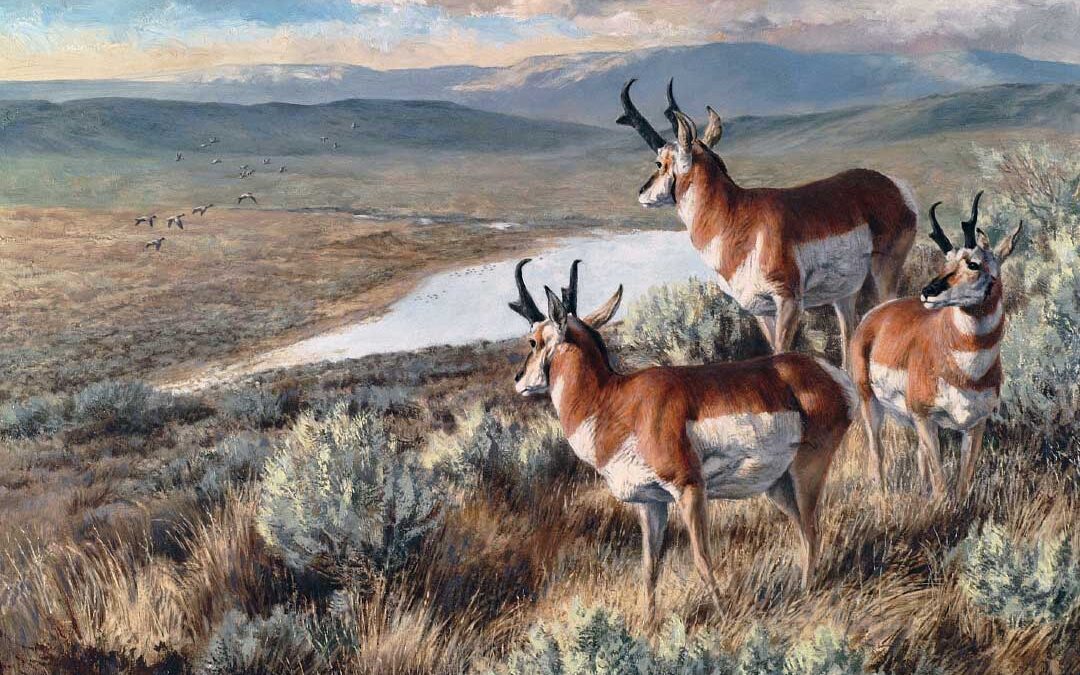I had seen countless bucks during my scouting trips and was on a spot-and-stalk trek for one of my top three bucks. Belly crawling through the thinnest of cover, I was two miles from my truck and still hundreds of yards from a high-strung buck I called “Captain Hook.” A crack of lightning sent him running.
It had been an overcast and blustery day and quickly the sky was turning a wicked black. Marching quickly across the plains, brandishing lightning bolt swords and thunderclaps, was a serious storm. An army of black angry clouds were on a hunt of their own and I found myself looking for the telltale funnel clouds that mark a storm changing from a barroom brawler to a serial killer. Stinging sleet pellets urged me on and I was barely able to make it back to my truck as the gale hit with full force pummeling my truck seemingly enraged it had just missed getting me.
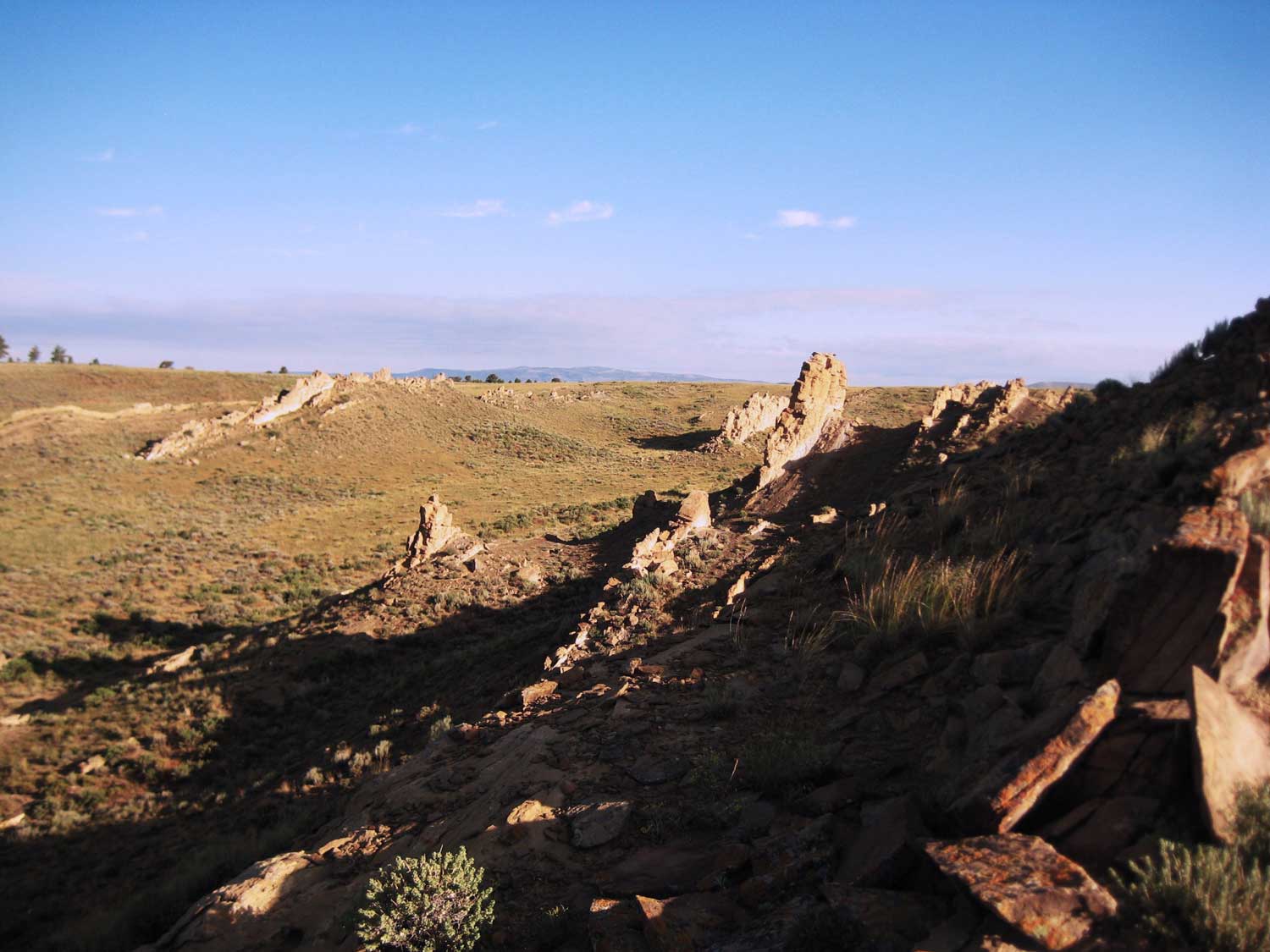
Time for a new plan. In a remote corner of the ranch I had jumped a nice buck a few days before who had blazed to the horizon hundreds of yards away. He’d had me thinking “nice one” even without a look through a spotting scope.
Sitting alone high on a bluff overlooking the ranch a mile away a small wisp of vibrant green caught my eye. The sage was a little taller in a low spot and looked to be a little lusher. Could it be a waterhole? Hundreds of yards away I could feel moisture in the air and the scent of wild water. I caught a twinkle of water through the sage. I had new hope.
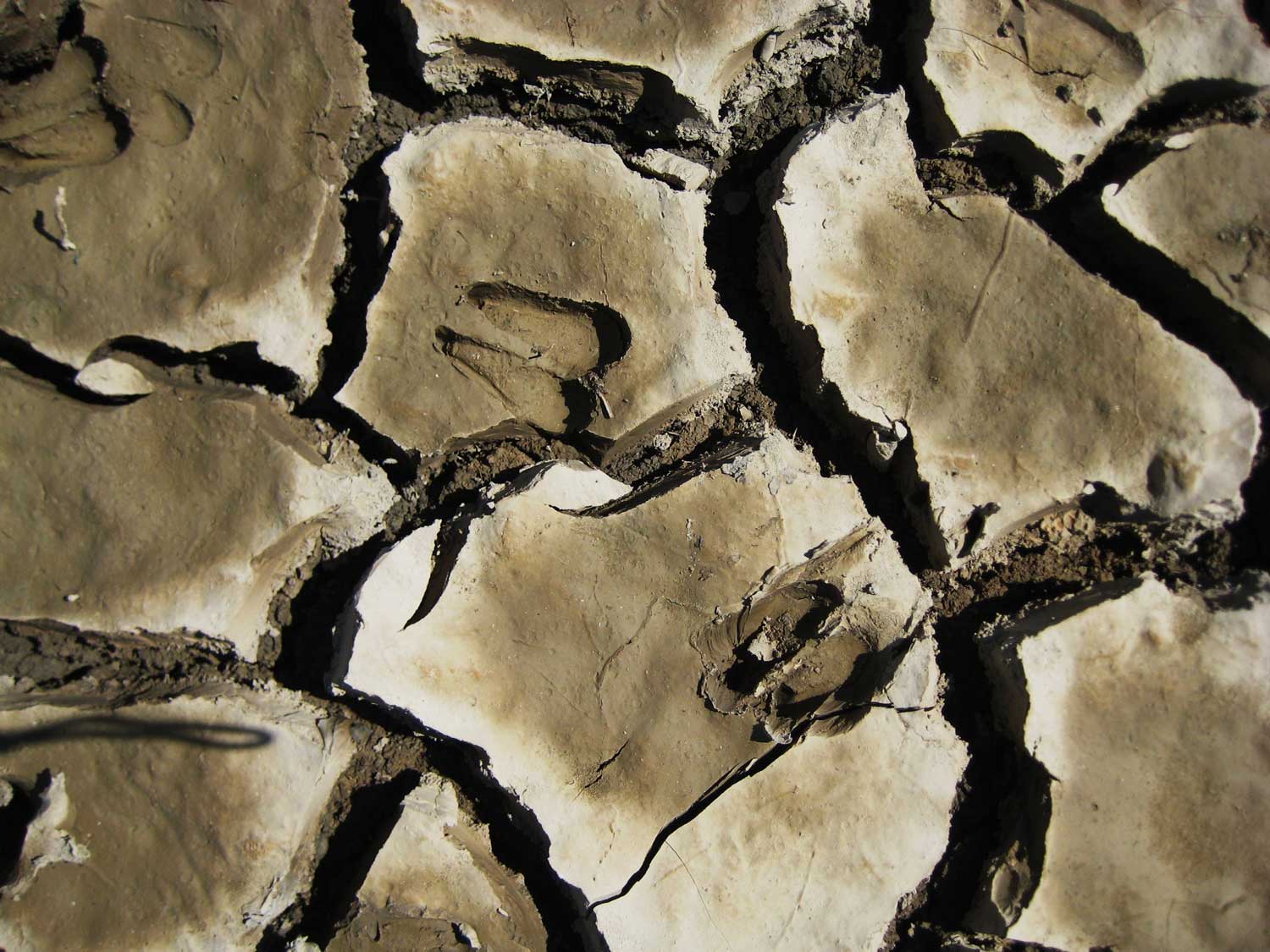
It was a sweet hidden spot with a high bank of tall sage on the short dam side. A scattering of fresh tracks showed one set that was surely attached to a big buck. It was a perfect set up for a natural blind.
I cut sage, found some sticks and bailing wire and felt like I was making a fort when I was a kid. This was going to be little more than a small sage nest to sit or crouch in the dirt. The design had one driving idea—stealth. The only comfort factor was a slight hole I kicked out with my boots to sit in to avoid sliding down the sloped bank. It would have to be perfect or else I’d send the sharp-eyed pronghorn to find their water elsewhere.
Setting off on the long hike to my blind the next morning, the night was cold, clear and still. Far from the light pollution of cities, the stars were astonishing, and I took the several shooting stars I saw as an omen.
Slipping into the blind using only the light of a half moon I settled in to the sound of the yipping and yowling coyotes telling me dawn was coming soon.
It was going to be cramped and hot. Any shot across the pond was right at 40 yards; 35 yards to the hard right. Any shooting would be on one knee and a butt cheek on the sloping dirt bank.
The water on the open prairie doesn’t just attract antelope, but also bugs, spiders and rattlers. As the old nature saying goes, water is life. Well, water can be death too and when the crossroads of the food chain meet some don’t walk away.
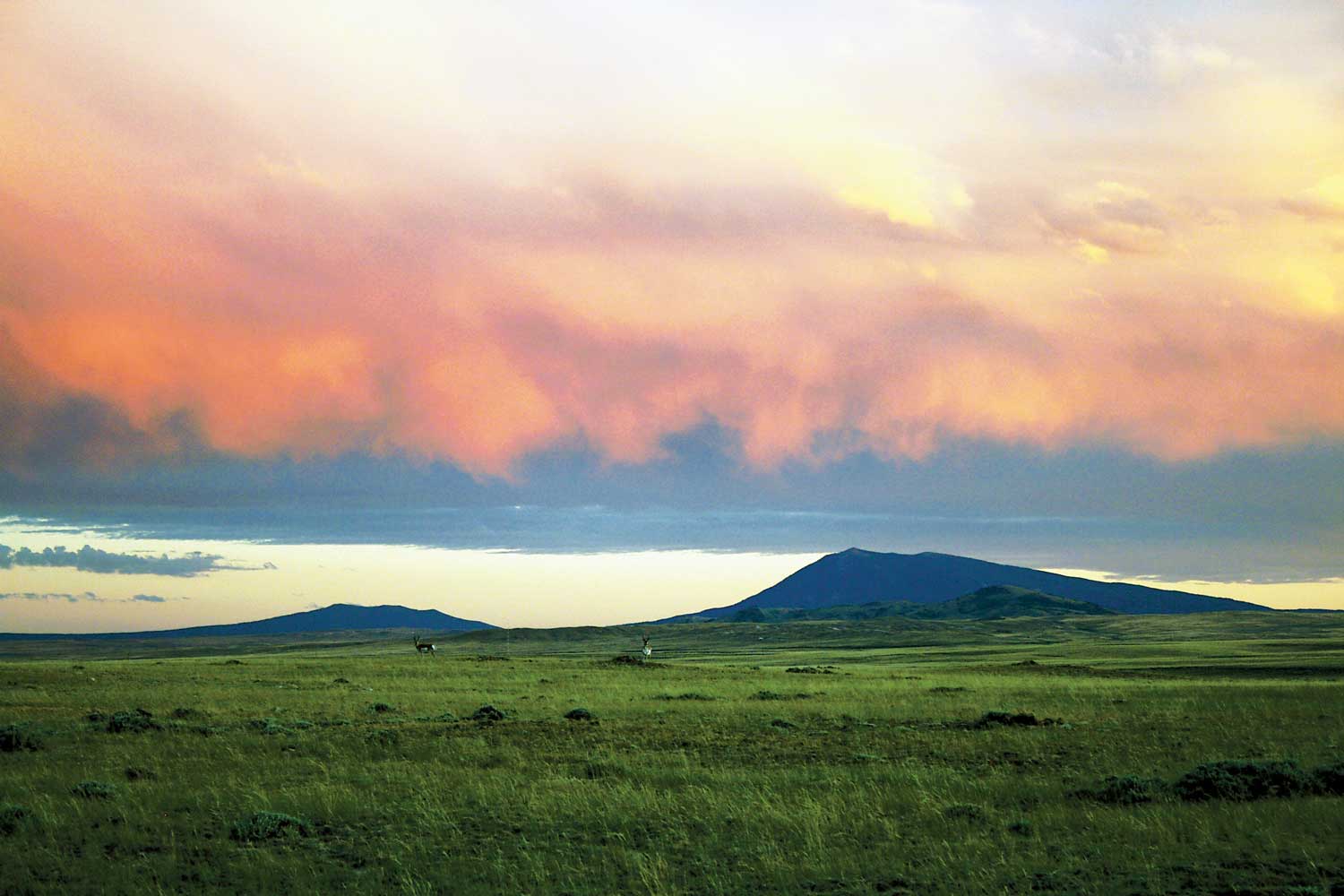
Just after dawn, an old ogre badger waddled down to the water’s edge for a pint of brew. I was caught up in the masterpiece of the sunrise when I snapped to attention. SLLLLLUUURP… I looked hard right and there was a doe sucking up a good drink close enough to see her long lashes blink. She had come in hard right and was in such a place as there could be 20 antelope just out of sight. I very slowly turned trying to get in position. She lifted her head, her eyes widened and she reeled and bolted.
My balloon of hope was popped. You got to be kidding me… she saw me? I had taken great effort on the blind and made extra effort to keep out rays of light that might show my movement, and I had barely moved at that. So now I am thinking GREEEEAT… I might wait here forever just to have any antelope bolt on my first movement. Well, I would give it a solid shot and see what happened next.
The sun was warming with the intoxicating smell of the sage and sunflowers, bumblebees buzzed and dragonflies were on a hunt of their own. It was after noon and could feel a nap tapping me on the shoulder. One more look and then a short snooze. There! I saw the black face and tall horns of a good buck about 500 yards away staring my way.
The heat waves kept me from a really clean look, but I could see he was packing some gear and no doubt a big buck.
The buck stood in one spot, head high above the horizon for 15 minutes, staring hard before taking a step. The wind was slight and good.
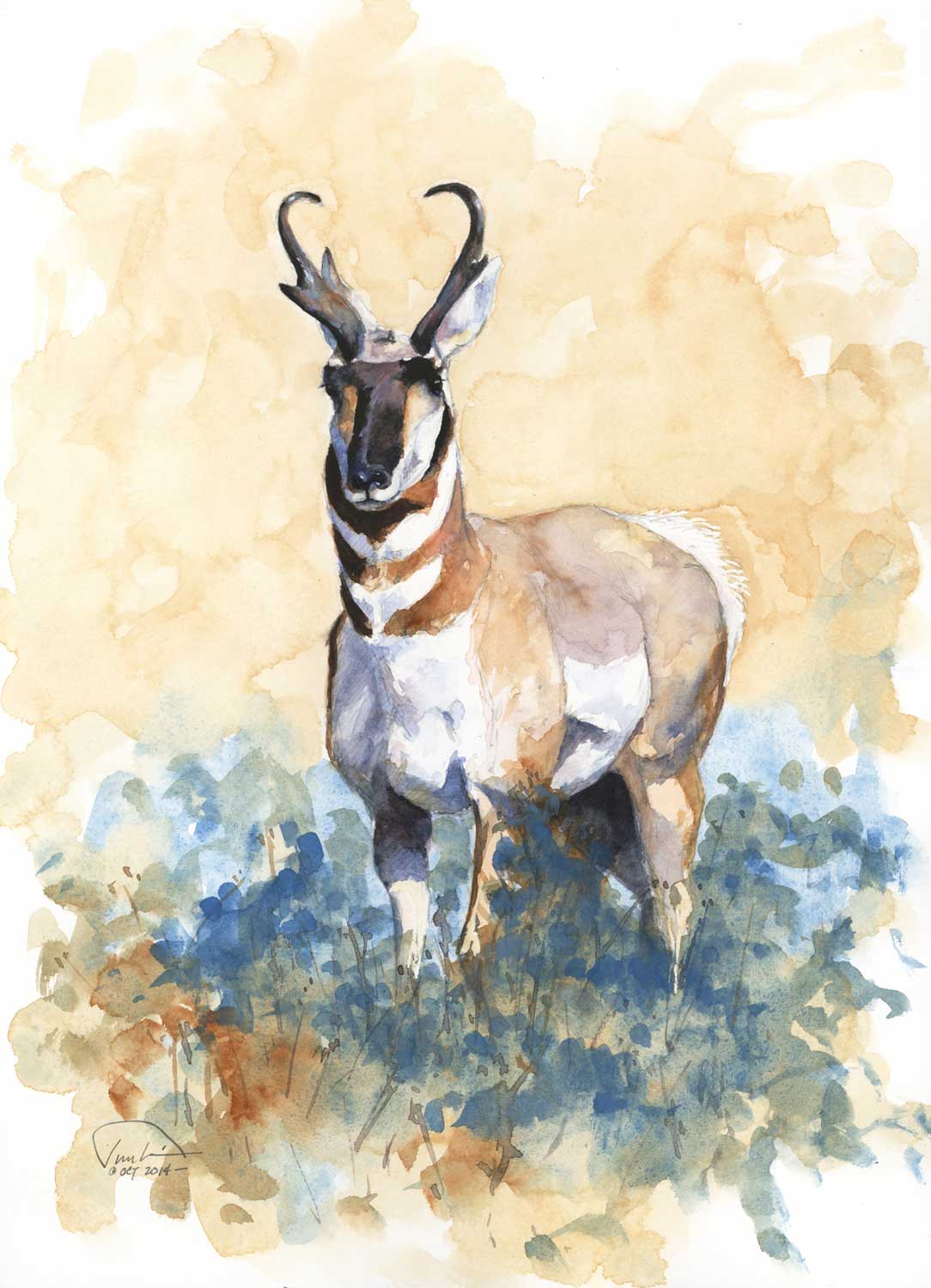
Montana Pronghorn by Paul Tunkis.
It took two more hours for the buck to move 400 yards closer, always on high alert staring hard. After the morning doe, this tightly wound buck likely would be impossible to draw on and get a clean solid shot without a string jump… or any shot at all.
I had been in my cramped blind for about eight hours and the red ants were having a hey-day with me. The ants were tolerable when you could kill them with vengeance to keep them at bay, and I had taken on some sort of sport to pass the time. But now the tables had turned.
I had lain in the blazing sun, crawled across the desert, was sun burnt, hadn’t had a real shower in a week, started a festering collection of cactus thorns in my forearms, crawled face to face with the biggest prairie rattler I had ever seen and too many new aches and pains to count. What is a little ant biting? My chicken bones from yesterday were of little interest to them. They wanted live meat. Me. These red ants were just a bit smaller than their monster cousins, fire ants, and for what they gave up in size, they made up in attitude and resilience.
By then I had a good look at him and he was a real stud buck. He was tall, 15 inches or so with obviously great prongs and good mass. He would easily make the Pope and Young record book.
I had long ago slowly gotten everything set; arrow nocked, facemask pulled down, bow in place. He was frozen in place staring hard about 80 yards out, those legendary eyes were dissecting every square inch. I was even trying to blink slowly and keep my pounding heart down to a low bang.
He had likely watered at this hole a thousand times. Was something different?
I felt an ant crawling up my neck. He made his evil way behind my face mask and I could feel him right below my right eye. I don’t know if he was liking my sweat or didn’t like being trapped, but fresh meat was on the menu. That little monster just started biting me as he crawled about. There was no way I was going to flinch. This was the culmination of a summer of scouting and a week of hard hunting. I had worked way too hard for this and knew this likely would be my best and maybe only chance.
The way the buck had moved in so slowly, I thought the last 80 yards might take a long time. I was wrong. He strolled in the last yards, satisfied the waterhole was clear of sharp surprises. I had planned on drawing my bow when his muzzle was 10 inches above the water. I figured that would be the instant he would have to be looking down for sure. Whoever said waterhole hunting is boring wasn’t feeling what I was feeling. I felt like Sugar Ray Leonard was using my heart as a speed bag.
His horns were high and jet black in the hot sun, and the anticipation during the long week and previous summer of scouting was coming to a pinpoint. He stopped just short of broadside with a slight quarter toward me. In the same motion, he bent down as I drew my bow. The 40-yard pin settled on the sweet spot and I touched the trigger.
Tttoooonk!
After hours of trying not to blink or move, and petrified the slightest movement or sound would bring it all to an end in a blur of hooves and dirt, the normally soft “doink” of my bow going off sounded like a cherry bomb in church. The buck reeled and bolted for about 30 yards to a lazy rise and stopped.
I didn’t see my arrow’s flight but had heard a quick “Sheeerlapp” of something hitting something, like a tiny axe into a ripe pumpkin. I was sure I heard it. The buck stood stiff and wide-eyed, looking very much alive and healthy. After everything had I simply missed? The buck was showing no sign of anything other than being a dragster at the line, ready to peel out.
I was quickly back to being as still as possible. After a few minutes, he took a few steps forward and his head momentarily bobbed low. He was hit. My hopes soared. By now, 10 minutes had passed, so a double lung or heart shot possibility was gone.
He turned slightly and, almost in the center of the white patch on his side, was a small spot of blood. I was thinking about four inches too far back. I shot a bull elk years back, striking it in the same spot and angle clipping the liver. He went 50 yards and it gave me hope.
He took a few more steps and laid down. My heart was pounding. I’m gonna get him, I thought. He was behind some sage, but I could see his head, which was bobbing slowly toward the ground and then out of sight. After a minute or so, my silent glee squeaked out in a jaw clenched, “I got him,” that was no louder than telling a secret across a table. Now, more than 100 yards out, he jumped to his feet, startling me back to reality. This was not over. Not by a long shot.
The buck walked slowly away from me and into a deep cut, out of sight.
I slipped out of my blind after marking a few reference points. I snuck to the top of the steep cut. It felt good to be on my feet. I stole a peek through some sage. There he was, bedded down and looking the other direction. The angle compensating range finder said 30 on the nose and almost straight down. I drew behind the sage to mask my movement and then leaned forward, the 30 yards pin high on his shoulder. I told myself, slow down, make it count, this is where it ends. A deep breath and a trigger squeeze. I had never made a steadier shot.
I saw the arrow, a carbon-comet zip right into the shoulder fold. Perfect. The buck snapped his head around, his eyes wide looking uphill. I could almost sense him say, “SO YOU’RE BEHIND THIS!” Until that moment, I don’t think he had a clue what actually happened other than that sip of water had made him feel ill.

He sprung to his feet with surprising quickness, spun hard and sprinted harder and faster than any pronghorn I had ever seen. He was on a 100-yard death run right back toward the waterhole in a whirlwind of dust and a blur of muscle and hooves. I had just seen my arrow bury fletching deep, but he looked more than alive. It looked like it had energized him. Midstride, as if struck by lightning, he tumbled down in a 15-yard crash of dirt, sage, horns, hair, flesh and blood, coming to rest 30 yards from the waterhole. I got him! I was whooping happy and ran to him on trembling legs.
He was a stone-cold stud. He appeared to be perfectly symmetrical and was right at 15 inches with good bases and great cutters. I thought he looked to score about 77 inches, which later proved to be spot on. A solid Pope and Young buck with lots to spare.
Note: This article originally appeared in the 2020 November/December issue of Sporting Classics magazine.

